Writing in second person—forgoing I or she/he/they of other perspectives in favor of that intensely-close, under-your-skin you—can, ironically, be rather alienating. Often it feels too intimate for the reader, or it distracts them from the story unfolding with questions of who is actually telling it. But when a writer commits to telling a story to you, about you, through you, the result can often be masterful—an extra layer of magic surrounding a sci-fi/fantasy/speculative tale and embedding the reader in the protagonist’s journey more intensely than even the most self-reflective first or closest-third could achieve.
Enjoy these dozen SFF tales, ranging from cheeky epistolary novella to intricate manifestations of grief to choose-your-own-adventure Shakespeare, that take on the trickiest perspective and make you (that’s you, the reader) forget you were ever skeptical.
Harrow the Ninth by Tamsyn Muir
Second-person point of view is often utilized when the protagonist has suffered a trauma and needs to distance themselves from the action of the story. No surprise, then, that Harrowhark Nonagesimus opens Harrow the Ninth addressing herself thusly, sick with self-loathing and wracked with confusion as the early days of Lyctorhood change not just her body but her relationship to the entire universe. This style perfectly encapsulates Harrow’s compulsion to hold her former self at a distance; and considering how Gideon the Ninth operated in close-third, it feels like an extra fuck you to the Ninth House’s cavalier. Of course, there’s more than meets the eye here, as Muir deftly twists language into multiple meanings while still imbuing it with self-sabotage and grief.
Buy the Book
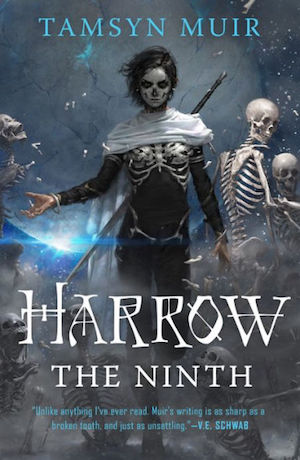

Harrow the Ninth
The Raven Tower by Ann Leckie
One of second person’s tricks is distracting the reader from who the narrator actually is—an impulse that Leckie plays upon in her first fantasy. Initially, the focus seems to be on young Eolo, aide to Mawat, the hot-tempered heir to the Raven’s Lease—a position that grants incredible power but demands a human sacrifice when the mortal Lease is up. Eolo is being watched, and subtly addressed, by the voice of the story, to the extent that the reader begins to identify with Eolo. The fact that Eolo is a trans man is brought up in the first few pages, but the second-person address dismisses any worries about pronouns—this is Eolo, plain and simple. Once you discover that the “I” is a sentient rock-god, suddenly Leckie expands the story to span millennia, broadening the scope from personal to epic and back again to personal, as Eolo and Mawat must uncover the circumstances behind his father’s rule being usurped.
Buy the Book
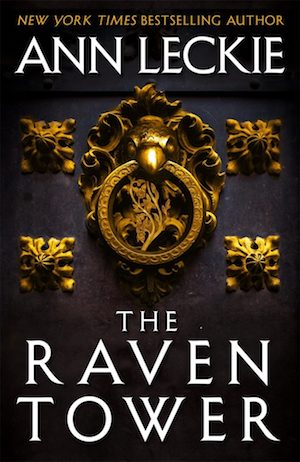

The Raven Tower
The Fifth Season by N.K. Jemisin
You are she, you are told in the first chapter of the first installment of Jemisin’s The Broken Earth trilogy. She is you. You are Essun. Remember? The woman whose son is dead. And so the story takes off, with chapters alternating between other characters like Damaya, presented in third-person, and Essun interludes with such titles as you’re not alone and you discover wonders down below. There is a reason that you-as-Essun are being addressed thusly, but you the reader must walk in Essun’s footsteps before you can understand why.
Buy the Book
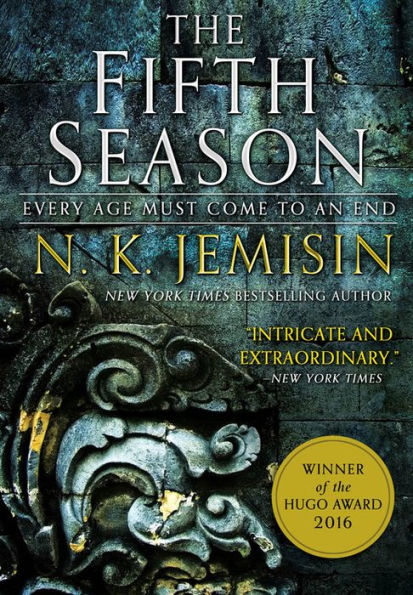

The Fifth Season
“The Girlfriend’s Guide to Gods” by Maria Dahvana Headley
In her short story, Headley reaches through the layers of time to engage every woman who knows her mythology, who identified with the Eurydices and Persephones and Heras without actually believing that they were the heroines of legend. To be sure, “your” story is more bitter than sweet, pockmarked with thoughtless betrayals by unworthy men and years wasted in Hell before you clawed your way back to the surface. But the greatest triumph of “The Girlfriend’s Guide to Gods,” both for Headley as oracle and you as reader, is the opportunity it offers to fully inhabit the experience of Greek mythology’s forgotten or dismissed wives, nymphs, shades, and brides.
Buy the Book
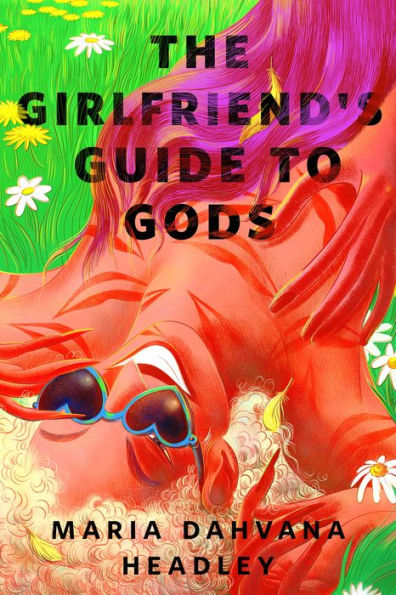

The Girlfriend's Guide to Gods
Romeo and/or Juliet by Ryan North
“Plays weren’t meant to be read,” proclaims the book page for Ryan North’s choose-your-own-adventure take on Shakespeare’s most famous tragic romance. “They were meant… to be played.” The Dinosaur Comics creator is retelling Romeo and Juliet through his signature irreverent voice, but really the ending is up to you, the reader. The CYOA style allows you to play as either (or both!) of the star-crossed lovers and follow your own path to all manner of destinies: dueling each other, getting real swole, fending off robots and ninjas… seriously. Nothing is off-limits in over 100 endings, each illustrated by a talented artist, including Noelle Stevenson, Kate Beaton, Kate Leth, Lucy Knisley, Randall Munroe, and many more.
Buy the Book
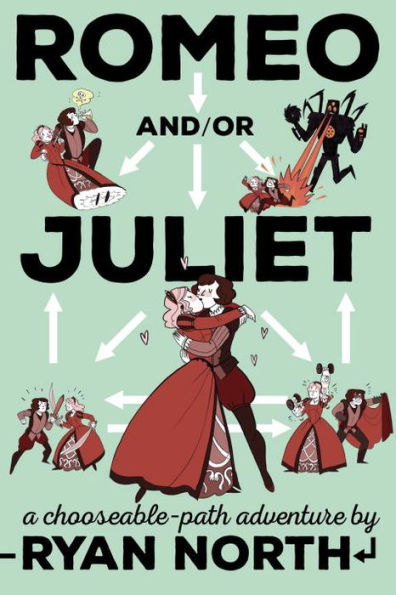

Romeo and/or Juliet
Emergency Skin by N.K. Jemisin
In Jemisin’s novella, part of the Forward collection, “you” are an unnamed explorer sent back to an abandoned, graveyard Earth after your people long ago escaped the dying planet. Interestingly, the narrator describes an in-universe physical ideal that you will attain at the end of your mission—white, male, “patrician” looks, blond—they stress that “you must earn your beauty.” So for the duration of your mission, better to regard yourself merely as an augmented instrument for a higher power looking for answers on this lost planet. In Emergency Skin, Jemisin makes second person as close as possible by positioning the narrator (Jason Isaacs in the audiobook) as an AI embedded in the protagonist’s brain—literally a voice in your head.
Buy the Book
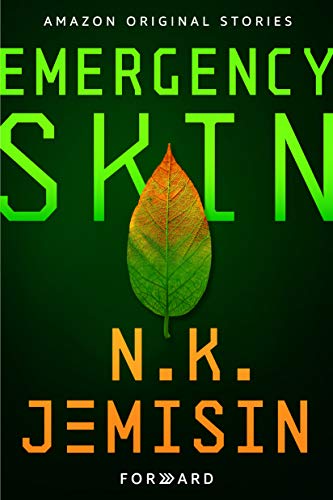

Emergency Skin
The Man Who Folded Himself by David Gerrold
Can a book be in second person if it doesn’t actually use the “you” pronoun? Yes, asserts Douglas Lain in his analysis of Gerrold’s seminal 1973 time travel narrative, folded in on itself as elaborately as a beautiful piece of origami. It’s not immediately obvious, as the novel takes place in the first-person, as college student Daniel inherits a Timebelt that allows him to jump forward and backward in time. As Dan hops in and out of his timestream, he encounters countless alternate versions of himself, forging the kinds of paradoxical relationships with those other selves that make this an unforgettable take on time travel. When you finish the novel, you might still wonder how it’s second person—but then you return to the opening lines: In the box was a belt. And a manuscript. You are Dan, opening the box… and suddenly you, the reader, are as folded as the man himself.
Buy the Book
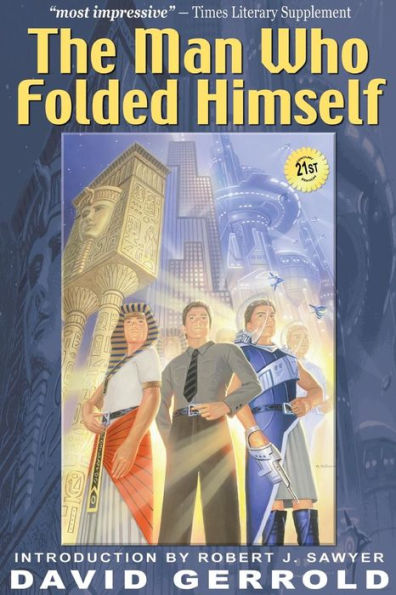

The Man Who Folded Himself
Some epistolary novels don’t commit to second person all the way through, but still address “you” via letters—from thick scrolls to organic messengers, they reveal a narrative that feels intimately close because it was specially written for one person…
The Tiger’s Daughter by K Arsenault Rivera
One unassuming morning, after eight years of being alone, the Phoenix Empress, Daughter of Heaven, the Light of Hokkaro, Celestial Flame receives a scroll in a script that no one would ever use to write to her. No one, save her fated friend and fellow warrior, Barsalyya Shefali Alshar. As she unrolls the scroll and beholds a letter from Shefali, the Phoenix Empress becomes O-Shizuka again, reading her lost beloved’s explanation of what has transpired in the past eight years—but first, Shefali must retell Shizuka her own life story. For almost the entirety of The Tiger’s Daughter, the reader becomes Shizuka, desperately listening to the revelations about “your” fate and when you will see your Shefali again.
Buy the Book
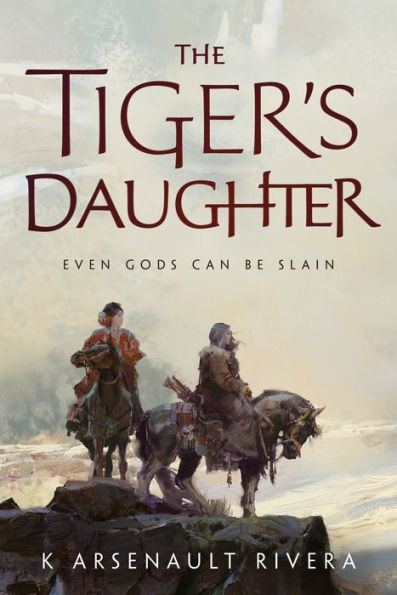

The Tiger's Daughter
This is How You Lose the Time War by Max Gladstone and Amal El-Mohtar
El-Mohtar and Gladstone’s collaboratively written (as in, literally side-by-side at retreats) novella is mostly told through letters passed from one rogue time agent to another. These missives are bookended by third-person passages setting up the how of Red or Blue even finding the other’s off-the-record correspondence. But the letters—with such gorgeous addresses as Dear Red Sky at Morning and My Blueprint—fill in who is writing, what kind of connection they are slowly forging through truly beautiful language, and why they are willing to risk the wrath of the Agency and Garden. As the shadowy reader poring over their letters, you get to be Red, you get to be Blue, you get to be every color in-between—you get to feel like you’re falling in love just as much as they are.
Buy the Book
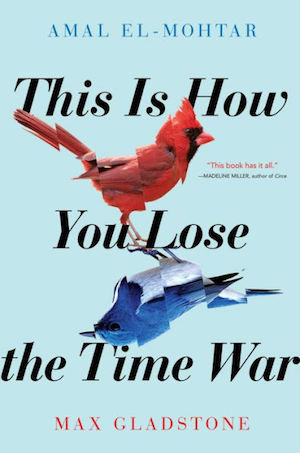

This Is How You Lose the Time War
Honorable Mentions
Some SFF tales flirt with second person POV in short, but unforgettable segments:
Redshirts by John Scalzi
Scalzi appends his Star Trek-inspired, metafictional novel with three codas, each occupying first-, second-, or third-person perspectives. Coda II, appropriately titled “Second Person,” builds on a turning point from the novel involving second chances and alternate selves. Without giving much away, the story—in which “you” are a previously-mentioned character coming into the narrative for the first time on your own—has a Man Who Folded Himself-esque meeting of selves and interrogates what kind of agency a background character in someone else’s story can attain for themselves.
Buy the Book
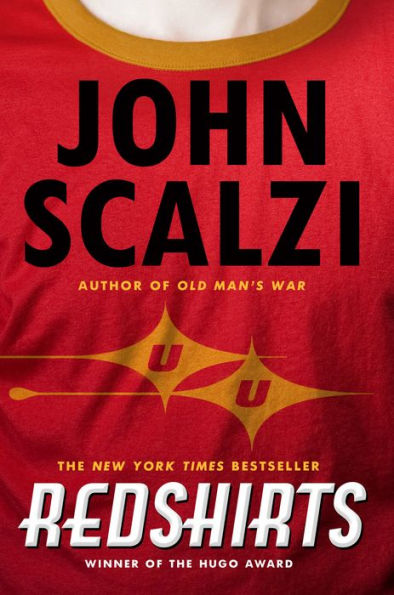

Redshirts
Acceptance by Jeff VanderMeer
To wrap up his Southern Reach trilogy, VanderMeer explored all three perspectives in the final novel. “Something that really annoys me with multiple character novels is when they use all first person,” he told Clarkesworld in 2014. “It’s really hard to make those differentiated, and if you use too many third person points of view, then the same problem can occur, just not as giant. Using the mix of the three makes them really stand out from one another, because the second-person one is set in the past.” That past perspective belongs to the psychologist from Annihilation, and recontextualizes that expedition’s foray into Area X.
Buy the Book
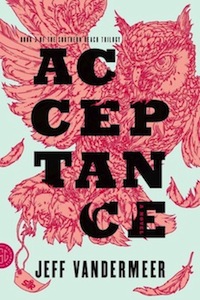

Acceptance
You by Austin Grossman
Not to be confused with Caroline Kepnes’ social media thriller (and Netflix guilty-pleasure adaptation) You, Grossman’s novel captures both the experience of seeing the world as a game designer adult and, influencing that, adolescence via role-playing games. While the novel switches between all tenses, anyone who has gathered with friends to collaboratively create an RPG adventure will feel their heart lift at passages like this:
Your character is always going to be you; you can never ever quite erase that sliver of you-awareness. In the whole mechanized game world, you are a unique object, like a moving hole that’s full of emotion and agency and experience and memory unlike anything else in this made-up universe.
Buy the Book
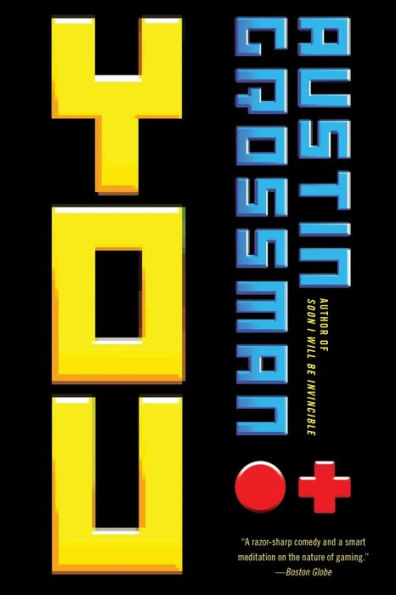

You
What are your favorite second-person stories in SFF?
Natalie Zutter was a second-person skeptic, but these books have played with the style so cleverly and heartbreakingly that she can’t wait to read more. Share your favorite “you” stories with her on Twitter!



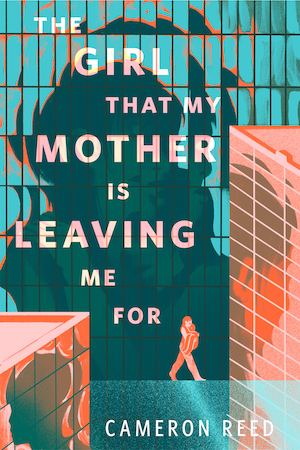
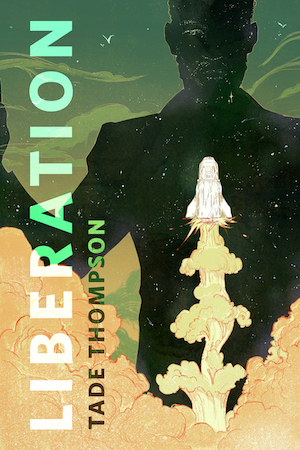





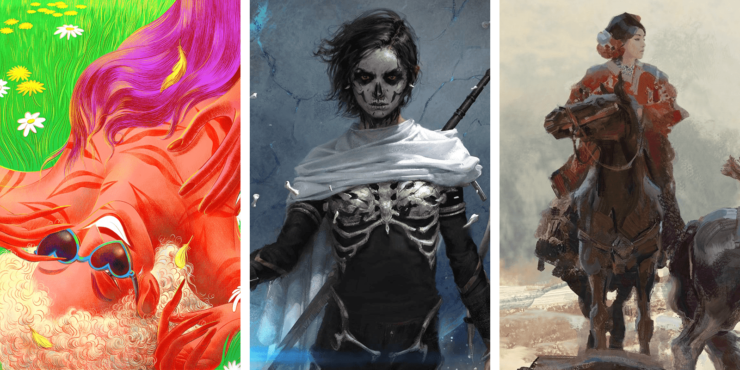
I’m pretty sure that the first full-length second-person novel I read was Will Shetterly’s Gospel of the Knife. (Unless you count things like Choose Your Own Adventure books.)
The Broken Earth books are particularly interesting because the important part isn’t just that those sections are in second-person perspective — it’s who is actually telling the story, addressing “you” in the narrative.
???
As much as i’d like to enjoy it Harrow the Ninth isn’t out until June, why is it included in this list?
If I can have the copy you’ve been reading i’d be grateful though.
“How to Live Safely in a Science Fictional Universe” is one I reread regularly.
First volume of Tamsyn Muir’s trilogy was written in the third person, second in the second person. Does it mean the third book will be written in the first person?
The first second person book I read was Keith Robert’s Molly Zero, published some time in the early 80s.
And, some “writers” claim that 2nd person doesn’t work! LOL!!!
I remember being introduced to first- versus third-person perspectives in fourth grade and spending quite some time wondering what happened to the one in the middle. I did eventually find out – accidentally, as I recall – but that was quite the longstanding mystery for me. Heh!
This take on The Man Who Folded Himself just kind of blew my mind. Whoa.
I’m trying to remember what grade I was in, probably 11th or 12th, but one memory from high school that has endured for me is getting ripped apart by my English teacher for writing in the 2nd person.
I think it’s stuck with me because the feedback really challenged me to think about different ways to write. I think I like the 2nd person because that’s the direction my inner monologue often drifts. I talk to myself in “we’s” and “you’s” so it’s natural to my worldview.
Halting State and Rule 34 by Charles Stross. Carlos Fuentes’s Aura (and large chunks of The Death of Artemio Cruz).
The best use of second-person I’ve seen was Rebecca Roanhorse’s short story, Welcome to Your Authentic Indian Experience(TM). There doesn’t seem to be any particular reason for the second-person… and then you reach the last line, and you realize what the story was the whole time, and you understand. Oof.
@6, It’s not so much that it doesn’t work but that it’s incredibly difficult to do well. As long as this list is, full of great books, we never see the long backlog of pretentious failed attempts as writing in second person that were rejected hard once crossing the editor’s table.
Yeah, second person is definitely a Choice that the author makes.
I think the first time I encountered it was in Orson Scott Card’s weird novel Hart’s Hope. Though the best use I’ve seen would be Elizabeth Bear’s second-person-future-tense story “The Chains That You Refuse.”
Second person is hard to do well. I’m kind of worried about Harrow now… hopeful though, as the first book was so good
Gene Wolfe, “The Island of Doctor Death and Other Stories” (found in the collection The Island of Doctor Death and Other Stories and Other Stories, as well as in The Best of Gene Wolfe and The Wolfe Archipelago). One of the best stories of one of the best writers ever to write in the genre. I’m kinda surprised it wasn’t on this list already!
Also worth mentioning:
* All the various Choose Your Own Adventure Books, of which many were SF, were all written in the second person.
* The superb attempt at a grown-up CYOA book by Kim Newman, Life’s Lottery, was of course also in the second person. Depending on the choices you make, it’s SF or fantasy or action or horror or domestic comedy (that’s part of the fun).
• Not SF, but weird and postmodernish and possibly of interest to SF readers, plus it’s quite possibly the single best second-person story ever, is Italo Calvino’s remarkable book If on a Winter’s Night a Traveler. The first sentence: “You are about to begin reading Italo Calvino’s new novel, If on a Winter’s Night a Traveler.”
“I Reap You Not” by Catelyn Winona. Book is written entirely in second person. I believe it was kind of experiment but book is great nevertheless.
The Terra Ignota series by Ada Palmer. The narrator doesn’t only tell the story to the books’ Reader: they plead with the Reader, they beg, they excuse themselves, they even give the Reader a voice sometimes!
Molly Zero, by Keith Roberts.
“You’re shivering inside your coat. It’s a nice coat; brand new, an olive green mac. Belt cinched tight and collar turned up, very military. It makes you look good, but it can’t stop the shakes. You drive your fists deeper into the pockets and hunch your shoulders. You tell yourself there’s nothing to worry about, it’s only Decentralization, it happens to everybody. But that doesn’t help much either. You’re Molly Zero, and you’re scared to death.”
It’s been a few years since I read it, but wasn’t the short story “The Story of Your Life” (basis of Arrival movie)(Ted Chiang) in second person?
Charles Stross’ Halting State & Rule 34, obviously, but if we include epistolary novels, then definitely Steven Brust & Emma Bull’s Freedom & Necessity (Marx! Engels! Chartists! Ancient druidic conspiracies!)
Bob Leman’s “Instructions” is a terrific second-person story.
And I almost forgot Fred Brown’s “Don’t Look Behind You”
Dune is a great example according to Brandon Sanderson.
Short examples are less difficult to find, but I have always loved Gregory Stewart’s “The Button, and What You Know.”
So, I wrote two novels in the second person present tense — both multi-viewpoint — back in 2006 and 2009: “Halting State” and “Rule 34”, set ten years into the future in an independent Scotland. Both police procedurals about crimes that don’t exist yet (FSVO “yet” that was contemporaneous with the setting), and the second person viewpoint was directly relevant to the theme of the story.
One of these years I intend to write the third in the trilogy, because: trilogy told entirely in the second person!